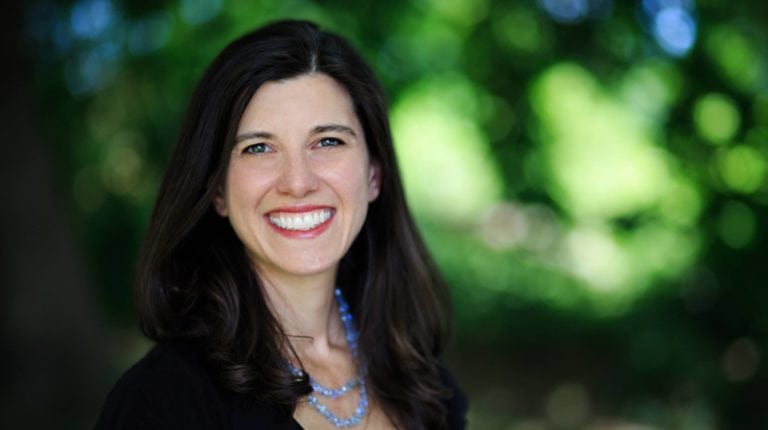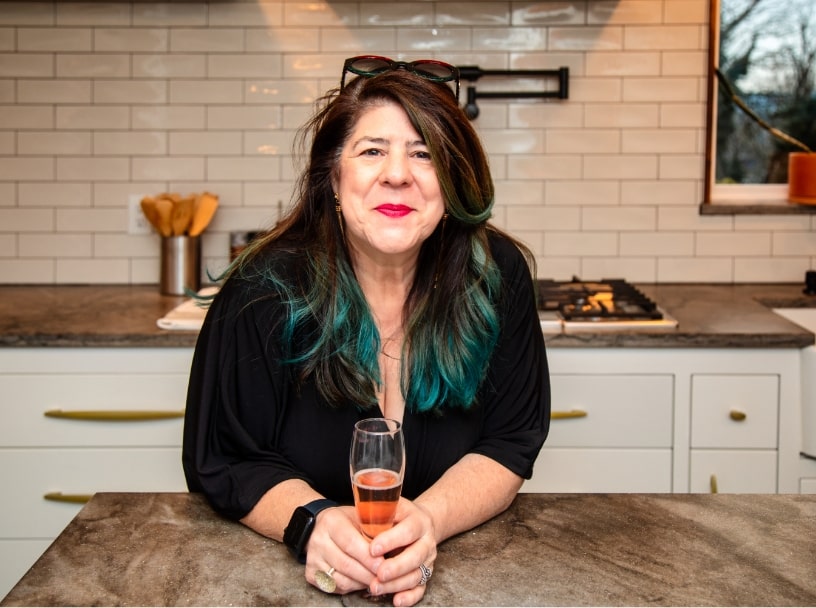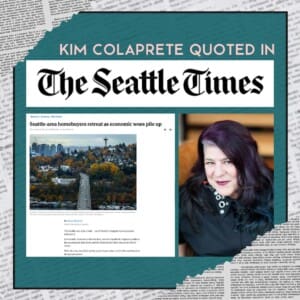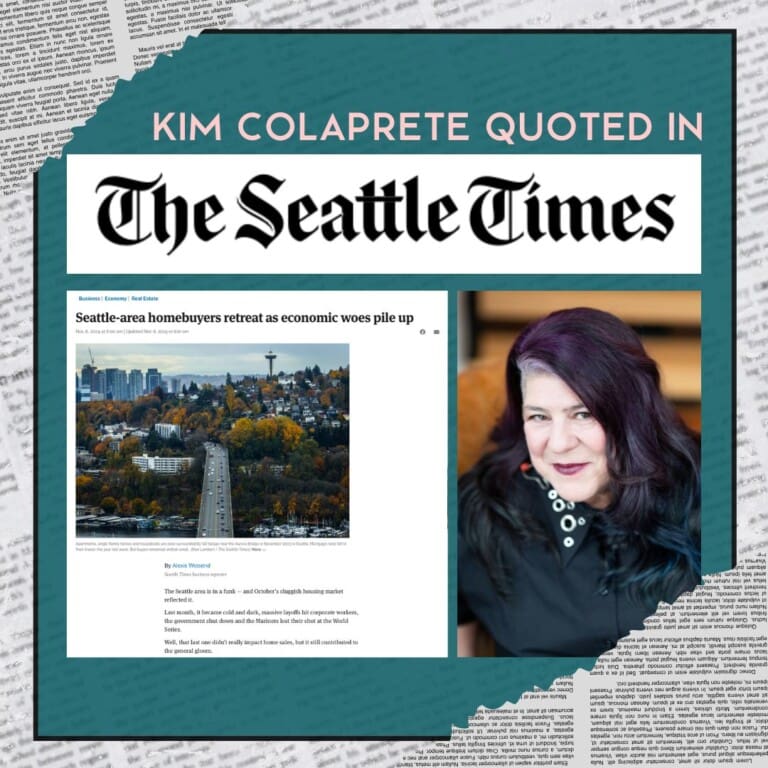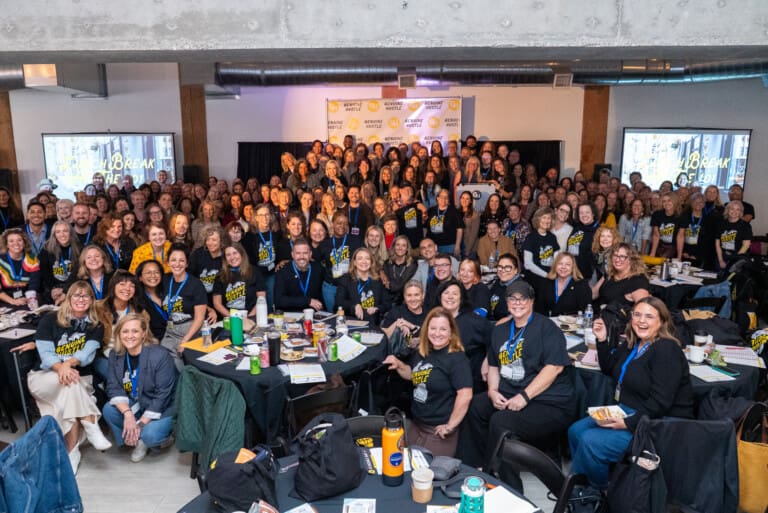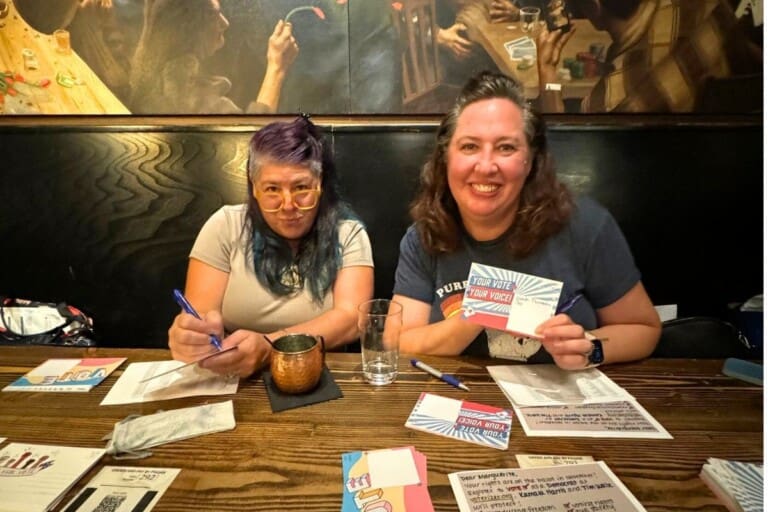Jessyn Farrell is a member of the Washington House of Representatives (46th Legislative District). She may not have the same name recognition of some of the other candidates outside her district, but her openness and clarity on the issues has greatly impressed us so far. Here is now she answered our questions.
Arts Support and Funding
The wry question in the local art scene these days is, “How fast are you going to move to Tacoma?” Seattle needs a thriving arts community to be a truly cosmopolitan city. The Arts & Cultural Districts program is in its nascence, and its efficacy is still in question. How do you see yourself as the mayor increasing and supporting our local arts community?
Jessyn Farrell: As a lifelong musician (and proud leader of the saxophone section in the Husky Marching Band when I was in college!) I know how crucial it is that we encourage enthusiasm for the arts from a young age. That’s why we need to fund our schools adequately, so that all children can have access to a rich array of arts education, starting from a young age. I have been a leader in the Legislature on funding for education, despite the difficult climate at the state level: recently, I secured $500 million for Seattle’s children and schools.
Beyond education, we need to support the arts community in Seattle. This is an economic as well as a cultural imperative: research has shown that arts and cultural employment is one of three main drivers of city economies. In a recent study reported on in The Atlantic, Seattle had the tenth strongest arts scene in the country, but government support for the arts ranked only 129th. We can and must do better. I support recommitting to the Arts & Cultural Districts program by expanding funding and community outreach to foster new districts in addition to Capitol Hill and the Central District. We should also draw on the innovative ideas encouraged by the Office of Arts and Culture, such as we’ve seen at the King Street Station “Bureau of Arts & Culture” exhibit, for integrating the arts in creative ways with the social needs of our city.
Affordable Housing and Homelessness
Housing, homelessness, and affordability are often entwined but have different solutions. Without a doubt, the housing levy dollars have not been making its way back into the community as it has in the past. Rental advocacy is starting to make its way through the community with different responses. Regardless, housing is a global issue and there is not a lot we can do about rising home prices. However, there is a lot we can do to help our homeless and create better housing options for those who make below the average income in Seattle. Specifically, how would you better manage the money from the housing levy, create downpayment assistance programs, and provide permanent housing for our homeless community? Considering that drugs, alcohol and mental health issues are intertwined within this community, what is your holistic approach to dealing with homelessness in Seattle?
Jessyn Farrell: There are several emergency measures I would take to set the table for more permanent solutions to homelessness. First of all, we should have sanctioned encampments in areas where services are available. The second step is to use secure short-term housing, or tiny homes. As always, a constant assessment of what’s working and what isn’t is key to our success. One way in which to do so is inventory the shelter space that the city can access. Surplus buildings that the County, City, and other public and private entities have could serve as shelters.
We must invest resources where they will be most effective. That requires us to get residents into safe, stable, and affordable housing now and connect them with the community-based services and support they require. That involves tackling the opioid crisis by implementing the comprehensive approach to harm reduction proposed by the Seattle and King County Heroin and Prescription Opiate Addiction Task Force. Their recommendations include prevention through education and awareness campaigns, provision of treatment on demand by making buprenorphine more accessible, and reducing the number of fatal overdoses by distributing naloxone kits and establishing establish safe consumption sites.
Ultimately, the greatest impact we can have on the lives of our homeless residents is focusing on ample long-term affordable housing. In the 2016 legislative authorization of Sound Transit, I secured landmark requirements for affordable housing near light rail. This will be a crucial tool in solving the problem long term. We know what works and what is needed to truly address the homelessness crisis in our city and region. The next mayor of Seattle must tackle homelessness with this holistic approach, and I am fully committed to doing so.
Transportation
Seattle consistently passes transportation levies to support buses, bike lanes, sidewalk expansion, and more. Yet our roads are in poor condition, especially in the non-core neighborhoods, and resources are not distributed evenly across the city. How are you going to better manage the city’s transportation dollars?
Jessyn Farrell: I’ve devoted my entire career to equitable transit and transportation policy, and it’s the reason I ran for office after my service as Executive Director of Transportation Choices Coalition. Throughout this time, I helped craft the legislation currently completing 520 and I-5 improvements and facilitated Sound Transit expansion. As Mayor, I’ll work to accelerate the delivery of light rail, meet carbon reduction targets, and keep our streets clean and well-maintained.
I’m only the candidate in this race with the track record, knowledge, and experience in transportation policy on both the neighborhood level as well as the regional and state level. I will bring my leadership and long-term vision to putting Seattle on track to have the most equitable, forward-looking public transportation system of any major urban center in the United States. This is my passion.
First, I would accelerate the expansion of light rail to West Seattle, Ballard, and the East Side. With light rail stations as hubs for transit-oriented development, and increased bus service connecting them with the rest of the city, these expansions would strengthen the backbone of the public transit system — we need this sooner rather than later. I have creative ideas to speed up the process, including streamlining permitting, as was done for the highway projects in the 2015 transportation package, and working with the state to make Sound Transit eligible for state funding again.
Second, we need to transform our pedestrian and bike infrastructure into a safer, more extensive, and truly interconnected network. I support investments in sidewalks, pedestrian and bike paths like the Burke-Gilman Trail, clearly marked bike lanes on neighborhood streets, and planning efforts that help communities identify and prioritize bike infrastructure.
An equitable transportation system can help level the playing field by decreasing the barrier of distance and increasing access to jobs, school, and cultural activities. This is why I plan to broaden access to lower-cost programs like ORCA LIFT to more low-income transit riders and extend the Youth ORCA program. I was one of the earliest and most vocal proponents of Seattle’s 2014 Prop 1, which invested $2 million per year in programs to improve access for low-income riders.
I support more investment at the state, local, and regional levels, and I have spent my career as a leader in making those investments happen. I have the track record and the relationships in Olympia, Seattle, and the broader metro region to wrangle all of the stakeholders for the good of our public transit system. I led the campaigns for Seattle Prop 1 and Sound Transit 2 and 3, and I will continue leading on this issue as mayor.
We also can’t talk about transportation without addressing safety as well. Beyond improving infrastructure for cycling and walking, we also need to continue to move forward on measures to increase safety from the driver’s side. As a state legislator, I passed the Distracted Driving Law, which will save lives. As mayor, I will pursue a data-driven plan to attack the problem from all angles to achieve Seattle’s Vision Zero plan to eliminate traffic deaths and serious injuries by 2030.
Policing
Despite five years of federal oversight under a consent decree, the Seattle Police Department’s reputation for biased policing and excessive force persists. This view is not helped by projects like the Bunker and the Youth Jail. At this point, the most visible actions by the SPD typically involve quashing protests and demolishing homeless encampments, not the image one would expect from a Sanctuary City. As mayor, what reforms would you push for in policing and its overall place and perception in the city?
The death of Charleena Lyles, a victim of domestic violence who had called police for protection and instead was shot in front of her children, is a tragic reminder that changing the training, culture, and oversight of SPD is a critical priority for our next Mayor. Institutionalized racial biases must end in our city. While the recent legislation passed by the City Council to continue federally mandated reforms is a sign of progress, we still have a long way to go.
Statistics show that crisis intervention and de-escalation have begun to decrease the excessive use of force, but we still have so much more work to do. We need to:
- Expand and support crisis teams that integrate mental health professionals and social workers with specially trained officers. Community members with mental health issues should not be presented with police tactics alone.
- Prioritize de-escalation. While officers are often faced with threatening situations, de-escalation and non-lethal force must be our priority. We must also provide support for our law enforcement officers as they adapt to handle these situations through a non-traditional framework.
- Improve recruitment and retention of officers who live in and reflect the community they serve, in order to address systemic issues in the long term. First and foremost, that requires making Seattle affordable for all. And it means instituting innovative approaches to recruiting officers, which is why I will make it a legislative priority for the City in Olympia to change state law to allow lawful permanent residents to serve their communities as police officers.
- Push for changes to the unjust state law that requires prosecutors to prove that officers used deadly force “with malice.” In the State House, I supported legislation that would have changed this standard and provided resources for training officers.
- Maintain and support strong civilian oversight of SPD through the CPC or similar structures that give community leaders a direct voice in policies that impact the relationships and accountability we desperately need to nurture and enforce.
Southeast Seattle
Every political season candidates come down to Rainier Valley for a photo op and then disappear for another four years. Meanwhile, the resources in our very wealthy city do not make it south of the ship canal. There is a long history of redlining through actual practice or out of habit in our city. Many mayors have had pet projects they have installed in south Seattle but have not created the infrastructure in the neighborhood to support these projects. As a sanctuary city many of the residents we want to protect reside south of the ship canal. Will you be the mayor who will make an effort to create safer streets, add curbs and sidewalks, mow the city owned portions of the mediums, and truly make a positive impact to the neighborhood? Or are you a photo op person?
Jessyn Farrell: I am committed to making the whole city a better place for all our residents, and that includes listening to and advocating for historically underserved neighborhoods in southeast Seattle. I am committed to improving transportation infrastructure in the south, especially by expanding bus service, building out bike and pedestrian infrastructure, and improving City maintenance.
In addition, I will support the communities in southeast Seattle through economic development programs. As mayor, I would build on and help coordinate the jobs programs that run by groups including nonprofits like Seattle Jobs Initiative and the Coalition of Immigrants, Refugees, and Communities of Color; the public-private partnership Workforce Development Council; and the City’s own Ready to Work program in the Office of Immigrant and Refugee Affairs. First of all, I would use the results of the evaluation of the first two years of the Ready to Work program to determine what aspects of the program are working and which ones need additional support. Most importantly, I will approach the issue collaboratively. I don’t make decisions unilaterally; I bring voices to the table and keep the channels of communication open.
Education Funding
Now, more than ever, Washington state needs to step up and fully fund education. The resulting impact to funding education will be an increase to the property taxes here in Seattle. The bulk of the fight is happening in Olympia. How do you see yourself working with Olympia to make sure Seattle gets the resources it deserves without harming poorer homeowners?
Seattle Schools deserve a partner in City Hall who has demanded and won necessary funding at the state level; an active public school parent committed to closing opportunity gaps and helping every kid reach their potential.
As a legislator, a graduate of public schools, and the mother of three young kids, I understand the importance of investing in public education.
In the McCleary Decision, the State Supreme Court ruled that the Legislature is not meeting our constitutional requirement to fully fund basic education. It doesn’t take a court decision to see that education is underfunded– parents see it every day. My kindergartener graduated from a class with 29 kids in it. That amount of students creates extraordinary challenges for even the most experienced teacher struggling to give every child the attention they need. In the state Legislature, I fought against plans that would have put the responsibility for funding public education on working families in Seattle, rather than the wealthiest few and out-of-state corporations, who already aren’t paying their fair share under our state’s regressive tax structure.
Despite opposition, Democrats in the legislature have made progress that we need to build on. We have increased education spending by $4.8 billion since 2011 in order to reduce class sizes, implement all-day kindergarten across Washington, and increase funding for maintenance and supplies.
I led my colleagues in advocating for helping keep homeless students near their schools, easing the teacher shortage, improving the opportunity gap, and reducing overcrowded classrooms. I have opposed charter schools and have fought to fully fund public schools as called for in state law, the state constitution, and the Supreme Court’s McCleary decision.
With the Republican Senate stalling action on state funding for our schools, and the federal government threatening cuts across the board, we need strong and proven leadership in Seattle to make sure we are prepared to give our children the education that they all deserve.
I support:
- Addressing the serious racial and economic inequities in our system. This requires a closer working relationship between the City of Seattle and Seattle Public Schools. The Legislature’s solution to fund schools under the McCleary decision will not cover everything our school system needs. We should use the renewal of the Families and Education Levy to ensure that our schools are funded equitably. Every school should have the school nurses, mental health counselors, and other services that children need.
- Fully funding school infrastructure. In order to keep pace with our growing school-age population, I plan to institute impact fees on developers to support public school infrastructure. This is the standard way that most jurisdictions fund new school buildings, and Seattle should join them.
- Investing in summer programming. We know that students who don’t have access to high-quality activities over the summer lose ground academically. Part of closing the achievement gap is making sure that all children have access to academic and enrichment programs during those months away from school. This means providing them with transit as well as the programming. The City has a responsibility to take a robust role in making sure that children have those supports all summer long.
Sanctuary City
For all the reasons above, there is reason to be skeptical that Seattle can be more than wellmeaning in calling itself a Sanctuary City. A housing crisis, questionable policing, unaddressed histories of racial bias and segregation (and antiimmigrant sentiments) that persist to this day all seem to prevent us from providing safe haven for people fleeing violence elsewhere. As mayor, what would you do to lay the foundation for being a Sanctuary City, in a way that integrates with the many other problems our city faces?
Jessyn Farrell: In order to keep Seattle a Sanctuary City in every sense, we need to move right away to make sure that state and local data cannot be misused to target vulnerable populations. In the Legislature, I sponsored bills that would outlaw discrimination based on citizenship or immigration status and prohibit the state from sharing information about a person’s religious affiliation for the purpose of setting up a database based on religion. As mayor, I will ensure city employees will not ask residents about immigration status, city employees will serve residents regardless of immigration status or identity, and police officers will not comply with ICE requests to detain immigrants for days without due process while federal agents decide whether to remove them. Declaring Seattle a Sanctuary City is one of the most important things our city has done. I will keep Seattle a Sanctuary City, protect against national cuts to services and resources, defend against threats to the safety and opportunity of residents, and stand up for all who make Seattle home.
Mayoral candidate Jessyn Farrell plans to attend our big summer party, Divas Take America, a drag carnival in support of Washington’s Paramount Duty and Seattle Indivisible. We hope to see you there, too.
Keep track of Farrell’s campaign on the official Facebook page and http://www.jessynformayor.com/.


